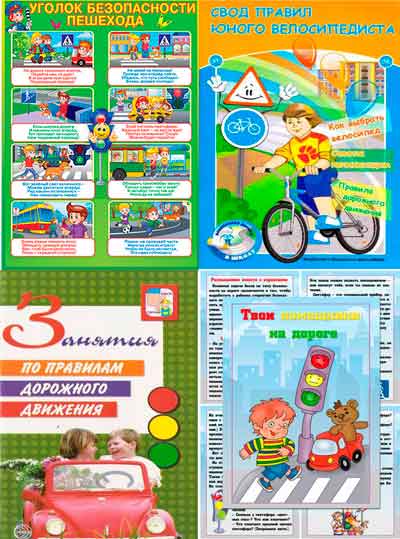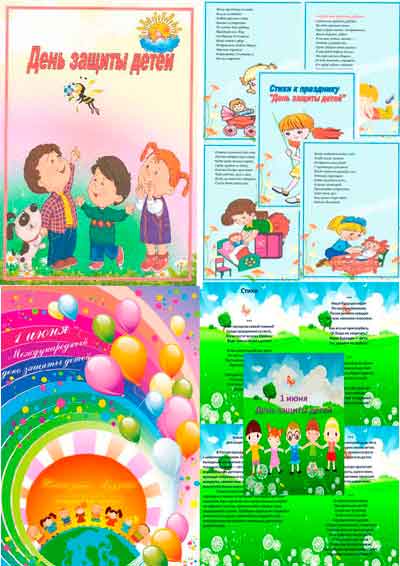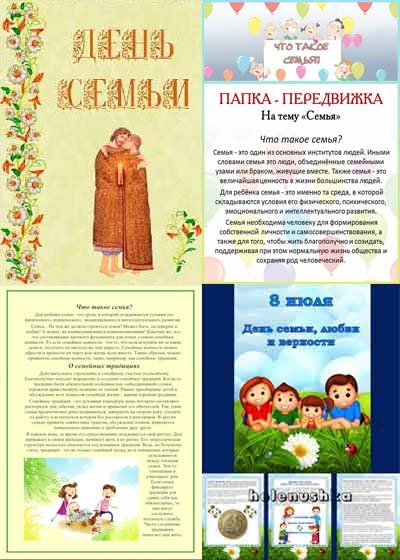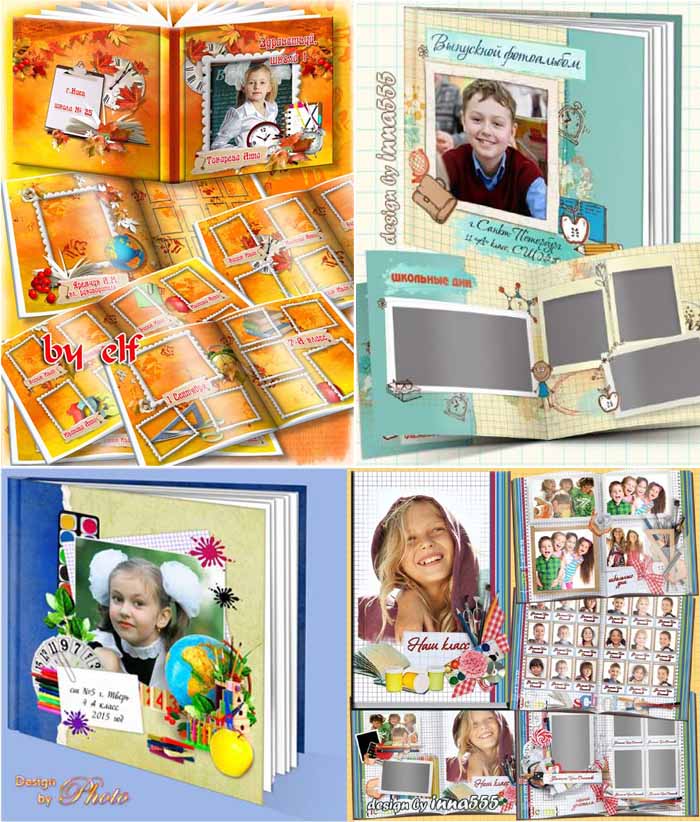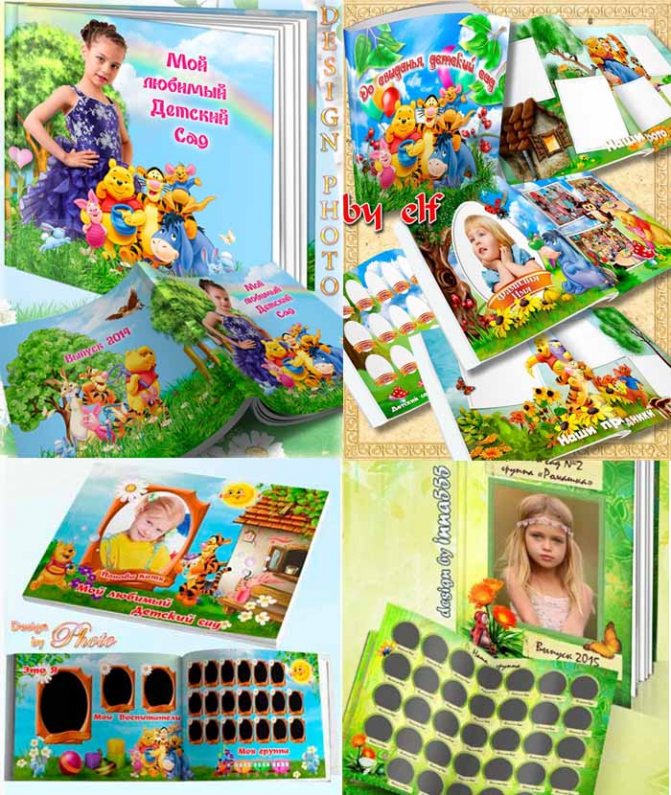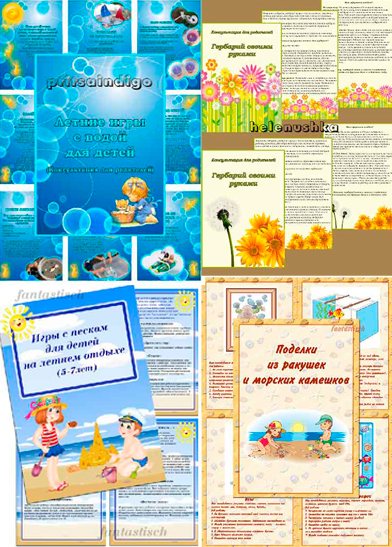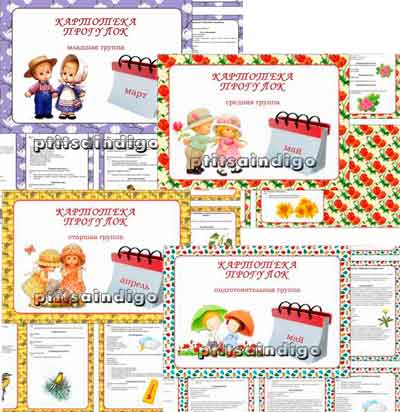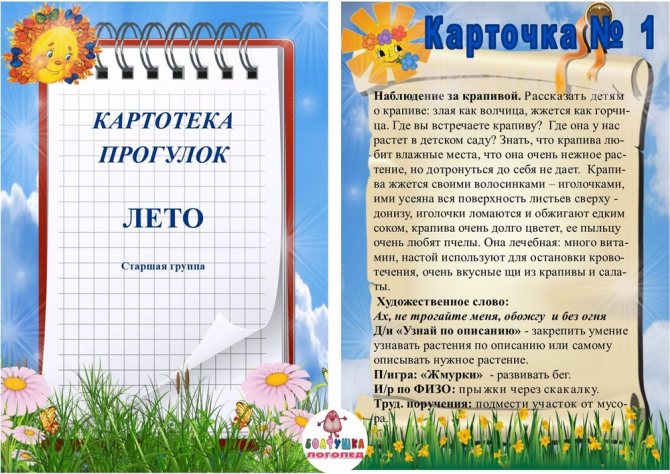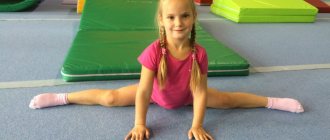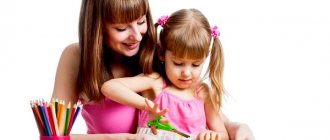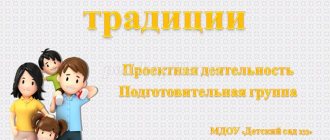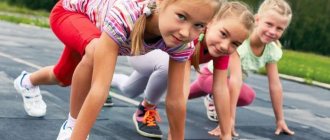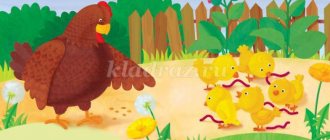Folder moving “Healthy lifestyle”,
P
principles of baby nutrition
Not all dishes eaten not only by his parents, but even by older brothers and sisters are suitable for preschoolers to eat.
The menu of a small child consists of more easily digestible foods, prepared taking into account the delicate and still immature digestive system.
Also, young children have a different need for the energy value of food.
To organize proper nutrition for preschoolers, parents should be guided by the following principles:
- adequate energy value,
- balance of nutritional factors,
- adherence to diet.
The table should have varied and tasty food, prepared in compliance with sanitary standards. The diet of a child from three to seven years old necessarily contains meat, fish, dairy products, pasta, cereals, bread, as well as vegetables and fruits. At least three quarters of the diet should be warm and hot food.
It is possible and it is not possible
Sources of protein - building material for a rapidly growing body - are meat, eggs, cottage cheese and fish. For feeding preschoolers, the best meats are considered to be lean veal, chicken, and turkey. The most preferable fish are cod, pike perch, pollock, hake, navaga and pink salmon.
Delicacies, smoked meats, caviar and other “holiday” dishes are best served on holidays - they irritate the mucous membrane of the stomach and intestines, and are not of great value.
Contrary to popular belief, fried foods can be given to young children, although it is better to give preference to boiled or stewed foods. Cutlets and meatballs can be fried, but not too much - the fat in which they are fried can cause heartburn. It is much better to cook them steamed or in sauce.
What and how much
Every day the child should receive milk and dairy products - kefir, fermented baked milk, cottage cheese, yogurt and cheese. They can be prepared for breakfast, afternoon snack or dinner, used both in their natural form and in casseroles, sandwiches and desserts. Vegetables, fruits and juices made from them are also required daily for preschoolers. For adequate nutrition, a preschooler needs 150–200 g of potatoes and 200–250 g of other vegetables per day. These include radishes, lettuce, cabbage, cucumbers, tomatoes and herbs. You also need a lot of fruits and berries - 200–300 g fresh, plus juices and nectars. Fresh vegetables and fruits are the main source of vitamins for a child.
In addition to meat and vegetables, children need bread and pasta made from durum wheat, as well as fats in the form of butter and vegetable oils.
We follow the regime
For a child to eat well, food must be enjoyable. Cabbage and porridge cause no less joy than a piece of pie, if both are equally tasty and beautiful. In addition, it is very important to follow a dietary regime. If a child eats too rarely, at large intervals, his mental and physical abilities are reduced from hunger, and the desire to eat more can become a bad habit. If a child eats too often, his appetite worsens and he does not have time to get hungry.
The optimal regimen is considered to be four meals a day: breakfast, lunch, afternoon snack and dinner. The calorie content of meals should be distributed as follows: 25 percent of the daily value is for breakfast, 40 percent for lunch, 15 percent for afternoon snack and 20 percent for dinner.
A child attending kindergarten most often eats there three out of four times. At home he only gets dinner. It makes sense for parents to take a copy of the weekly menu from the garden so as not to cook for dinner what the child has already eaten.
It is also worth considering that not all foods need to be given to children every day. So, the list of products for every day includes milk, butter, bread, meat and fruits. But it is enough to get fish, eggs, cottage cheese, sour cream and cheese once every two to three days.
Z

heat treatment for preschool children
How to properly harden a baby so as not to harm his health?
There are special methods for hardening children. These include air baths and water procedures: foot dousing, contrast dousing, rubbing and swimming in open water.
Walking barefoot, washing the child extensively, ventilating the apartment are hardening in everyday life. It is very convenient, because such hardening does not require special conditions. It is indicated for all children, but an individual approach is required. It is necessary to select a regimen and take into account the child’s health status and level of physical development.
Follow the principles of hardening: systematic and gradual. Before the start of the procedures, the child needs to create a positive emotional mood. If the child does not like any hardening procedures, they cannot be forced into practice.
How to take air baths
Everyday hardening of young children should begin with air baths. Firstly, this is a hygienic procedure, and secondly, hardening.
To begin with, select a temperature that is comfortable for the child, gradually reducing it to reasonable limits. It is worth considering that at temperatures below +17 and above +26, hardening activities cannot be carried out. High temperatures can lead to overheating of the baby, and low temperatures can lead to a cold. But the child should not just stand in a cold room - this is not hardening, and it’s easy for the baby to catch a cold. When a child does physical exercise, then hardening works great.
Therefore, it is good to combine air baths with morning exercises, which are absolutely necessary for all children. Ventilate the room, but it is better not to dress the baby and leave him to study in panties, a T-shirt and socks. When your child gets used to studying in a cool room, you can skip wearing socks and practice barefoot.
How to wash your face
After charging, go to the bathroom to wash your child first with warm water, and when he gets used to it, make the water cooler. Extended washing is good for hardening - not only the hands and face, but also the arms to the elbows, the neck and the upper chest and neck.
How to sleep
Hardening can be carried out while the child is sleeping, day or night. The temperature suitable for hardening during sleep is 2-3 degrees lower than the usual temperature in which the child is awake. The same temperature is suitable for taking air baths. Before going to bed, ventilate the room or leave the window open if it is not cold outside. But make sure there are no drafts. For children under 3 years old, keep the temperature during sleep within 21-23 degrees, and for older children - 20-21 degrees, and from 5-7 years old - 19-21 degrees.
How to dress
What the child wears at home is also of great importance. Just like during walks, you shouldn’t wrap your baby up too much. When the temperature in the apartment is above 23 degrees, underwear and thin cotton clothes are sufficient; at 18–22 degrees, you can wear tights and a long-sleeved thick cotton blouse.
How to walk
Some children love to go barefoot. But it is harmful for young children to walk barefoot on a hard surface for a long time: after all, their arches are still developing. And due to rigid support, existing disorders may worsen or flat feet may develop.
So here, too, everything needs to be dosed. Let your child run around with bare legs, for example, while doing exercise. Or, if you have thick carpet on the floor, allow your baby to walk on it barefoot.
If you have the opportunity to go out into nature with your baby in the summer, where there is clean grass and the environment is not dangerous, then you can let your baby walk on the ground and grass.
N

a little dirt for children's health
In a house where there is a small child, adults try to keep it clean one way or another. This is correct and important, because germs affect children more seriously than adults.
Sterility error
It is impossible to create sterile conditions for a child. But if parents strive for this, they bring harm, not benefit, to their child. Baby is not a rare greenhouse plant. After all, sooner or later he will have to leave the house and face everything that lives outside: germs, dirt and other factors from which he was so carefully hidden.
And in order to adapt to a “foreign” infection that a child encounters throughout his life, it takes some time. And children who grew up without contact with the dirt that frightens their parents have a very difficult time.
The error of connivance
Despite the fact that sterility is not only not useful for a child, but even harmful, one should not rush to the other extreme. Remember that a modern city cannot be called absolutely safe for a child. For example, in a crowded public transport, a child can easily pick up a completely unnecessary viral infection. Especially in autumn and winter - at the height of epidemics.
You should also be careful when visiting super and hypermarkets. Be especially careful about where and how your baby walks. After all, a child is much shorter than an adult, and when he runs among store shelves, touches goods with his hands or falls on the floor, the risk of encountering an infection brought on packaged goods, carts or visitors’ shoes is much higher.
Another strange habit of parents is to put their children in grocery carts and pile them with purchases. They immediately happily put into their mouths everything they can get their hands on. Question: How many microorganisms live on the surface of a seemingly safe milk carton?
The main thing to do is to monitor the child. Hands stained with sand are one thing, but a preschooler rummaging around a trash can and collecting beer caps or cigarette butts on the street is quite another. So, if a baby puts into his mouth everything he finds on the street or at home, this is not a problem of unsterile living conditions, but an oversight and irresponsibility of the parents themselves.
How to protect your child
However, even the most attentive parents will not protect their child from all infections. But how can you help your baby?
The first and most important thing a mother can do for a newborn baby is to breastfeed him for a sufficient time. After all, important antibodies are transmitted with mother's milk, providing protection to the child from a variety of infections.
If there are no contraindications to vaccinations, it is necessary to vaccinate on time and correctly. Parents decide on vaccinations individually with a pediatrician, allergist and immunologist. And, if the baby does not have any problems, you cannot simply refuse vaccinations. After all, by doing so, parents condemn their own child to an increased risk of getting sick.
And again about sterility
There is no need to constantly use household chemicals to disinfect the premises in which the child lives. First of all, because the constant use of chlorine-containing substances can lead to the development of a severe allergic reaction and even bronchial asthma in the baby. Especially when it comes to using aerosols.
If you constantly use the same air fresheners, functional and morphological changes may occur in the child’s respiratory tract, which subsequently are practically not treated. Moreover, if contact with “chemistry” began at a very early age.
P

We teach the child the rules of personal hygiene
Teaching children the principles of personal hygiene is not such a difficult process. Kids willingly imitate adults and love to do everything like mom and dad. If you approach your studies consistently and with imagination, your child will quickly become friends with soap and a toothbrush. The baby is taught hygiene procedures from the very first days of life - it all starts with ordinary bathing. And by the age of three, a child is quite capable of mastering simple self-care skills.
What to talk about
The baby does not always understand why he needs to wash his hands or wash his face. The parent’s task is to clearly and simply explain to him why he shouldn’t be dirty. A very little person should not be told about terrible diseases or abstract health.
Each family has its own story about dirt - someone can tell you that it is ugly, someone will refer to the example of adults, and more advanced parents can tell about germs in simple words. The main thing is to interest the child and not scare him.
According to Morgunova, children should definitely see a positive example of adults. It’s not enough to simply talk about the benefits of washing your hands, or to take your child to the bathroom after a walk. Parents themselves must set a positive example for their children - and go wash their hands with them.
On a visit to Moidodyr
A child at this age wants to be independent. Therefore, we must give him the opportunity to do everything the same as adults. You can place a bench next to the washbasin, allowing the baby to independently reach the tap.
The child needs to hang his own bright towel, which he can reach himself. A special baby soap in the form of small funny figures with a pleasant smell will also help in getting used to washing. You need to gradually teach your baby to wash himself. It’s good if at first the child can watch how dad or mom washes their hands and face, telling and showing how to do it correctly. Then the parent can wash the child himself and offer him to use a towel.
The next stage is that in the presence of an adult and with his help, the baby gradually learns to take soap correctly, lather his hands and rinse off the foam under the tap.
Take a shower!
Turn on the shower in the presence of the child, offer to “catch” the water with your hands, splash around and generally understand that this noisy thing is pure pleasure. Do not apply too much pressure so that the flowing water does not scare you.
It is better to place a rubber mat under the baby’s feet to prevent him from slipping. Buy a bright soft washcloth, baby shower gel, hair shampoo and a bathrobe - so that everything is the same as for adults.
As with washing, teach your child gradually: to lather and rinse off the soap suds, turn the shower on and off, draw the curtain and dry off. The process, which for now seems like a game, will eventually become an important ritual for the child.
Clean teeth
Some parents believe that baby teeth “will fall out anyway” and there is no need to brush them. But this is a dangerous misconception. They hurt just as much as permanent ones, and an infection that settles in the oral cavity due to unbrushed teeth can cause gum disease and spread to newly grown permanent teeth.
Teaching your baby to brush his teeth is not as difficult as it seems. It is better to show how to brush your teeth correctly by your own example - it is more pleasant for the baby to do everything together with his parents.
A special children's brush with a thick, non-slip handle that holds its position well in the baby's hand. The baby also needs a special children's toothpaste. But for a few more years, parents will have to dose out the amount of toothpaste on their brushes—it’s very difficult to persuade kids not to eat the sweet and aromatic substance.
Teach your child to rinse his mouth after brushing his teeth - almost all children like to “blow bubbles” and spit water into the sink.
For preschool age
Preschool children will be interested in the following sections: children's songs and children's karaoke.
| Songs about mom | Songs about kindergarten | Songs from Soviet cartoons | Interactive fairy tales | Karaoke for children |
In addition, parents can download for kids:
— coloring pages and copybooks for printing;
— computer games and programs for installation on a computer;
— information about the upbringing and health of the child, as well as safety at home and on the street;
— preschool employees will find auxiliary material for teaching children mathematics, writing, reading, visual aids for learning and developing perception of the world around them, as well as material for organizing groups in kindergarten.
THEMATIC MATERIAL on healthy lifestyle in preschool educational institutions

All-Russian permanent professional competition for teachers of preschool organizations “Healthy lifestyle in preschool educational institutions”
Potapova Tatyana Petrovna, teacher. Agafonova Elena Nikolaevna, teacher. MBDOU No. 34 “Zorenka”, Kaluga
THEMATIC MATERIAL on healthy lifestyle in preschool educational institutions
Thematic material of practical orientation
The Constitution of the World Health Organization (WHO) states that health is not only the absence of disease or infirmity, but also complete physical, mental and social well-being. That is why the health problem should be considered in a broad social aspect.
Therefore, every teacher faces questions: how to organize the activities of preschoolers in order to give each child an optimal load, taking into account his readiness and health group? How to develop interest in physical education and the need for a healthy lifestyle? Therefore, a problem arises that is relevant both for pedagogical science and for practice: how to effectively organize the educational process without harming the health of preschoolers? It is possible to answer this if we approach the organization of education and training from the perspective of the three principles of valeology: preservation, strengthening and formation of health.
It is undeniable that the main task of a kindergarten is to prepare a child for independent life, giving him the necessary skills and abilities for this, and cultivating certain habits. But can every professionally trained teacher, just an adult, responsible person, be dispassionate about the unfavorable state of health of his students, its progressive deterioration?
Advertising message
One of the answers to this question was the demand for the use of health-saving educational technologies in our preschool educational institution.
The smaller the child, the more he needs health care from adults, instilling habits of cleanliness, neatness, mastering cultural and hygienic skills, self-control during various physical activities and understanding how physical exercise and a healthy lifestyle affect the human body, on his well-being. The formation of the habit of a healthy lifestyle is determined, first of all, by the process of education, the pedagogical influence of an adult on a child, and a wide range of pedagogical means and techniques. V. A. Sukhomlinsky wrote: “I am not afraid to repeat once again: caring for health is the most important work of an educator. Their spiritual life, worldview, mental development, strength of knowledge and self-confidence depend on the cheerfulness and vigor of children.”
Preserving and strengthening children's health is one of the main strategic objectives of the country's development. It is regulated and ensured by such regulatory documents as the Law of the Russian Federation “On Education”, “On the Sanitary and Epidemiological Welfare of the Population”; as well as Decrees of the President of Russia “On urgent measures to ensure the health of the population of the Russian Federation”, “On approval of the main directions of state social policy to improve the situation of children in the Russian Federation”, “Convention on the Rights of the Child” in compliance with the Federal State Educational Standard.
Our Doe uses various technologies for teaching a healthy lifestyle:
-Physical training – 2-3 times a week in sports or music halls. Early age – in a group room, 10 min. Young age - 15-20 minutes, middle age - 20-25 minutes, older age - 25-30 minutes. Before class, it is necessary to ventilate the room well.
-Problem-based games (game training and game therapy) - in free time, possible in the afternoon. The time is not strictly fixed, depending on the tasks set by the teacher. The lesson can be organized unnoticed by the child, by including the teacher in the process of play activity.
-Communicative games – 1-2 times a week for 30 minutes. from an older age. Classes are structured according to a specific scheme and consist of several parts. They include conversations, sketches and games of varying degrees of mobility, drawing, modeling, etc.
One of the most effective hardening procedures in everyday life is walking . A walk is one of the most important routine moments during which children can sufficiently realize their motor needs. The optimal form for this is outdoor games and physical exercises. During walks I try to use various outdoor games: games with walking and running: “Sparrows and a car”, “My funny ringing ball”, “Find the flag”, “Run to me”; games with jumping: “The little white bunny is sitting”, “Across the stream”; throwing games: “Aim more accurately”, etc.
Outdoor play occupies a special place in the development of a preschool child. It helps to consolidate and improve motor skills and abilities, provides an opportunity to develop cognitive interest, and forms the ability to navigate the surrounding reality, which is so important for a child to gain life experience.
In addition to outdoor games, in our work we widely use a variety of exercises in the main types of movements:
– Running and walking;
– Jumping;
– Throwing, throwing and catching the ball;
– Obstacle course exercises.
Of course, special importance in raising a healthy child in our preschool institution is given to the development of movements and physical education in physical education classes.
One of the most important components of strengthening and healing the child’s body, as well as organizing the child’s motor regimen, aimed at raising the emotional and muscle tone of children, is morning exercises. The purpose of morning exercises is to create an emotionally favorable, friendly, comfortable environment in the children's team. Morning exercises gradually involve the child’s entire body in an active state, strengthen breathing, increase blood circulation, promote metabolism, create a need for oxygen, and help develop correct posture.
In the breaks between classes, motor warm-up is carried out. Its goal is to prevent the development of fatigue in children, relieve emotional stress during classes with mental stress, which contributes to a faster perception of program material. Motor warm-up allows you to actively relax after mental stress and a forced static posture, and helps to increase the motor activity of children. The game exercises used in warm-up are well known to children, simple in content, with a small number of rules, do not last long (no more than 2-3 minutes), and are accessible to children with different levels of motor activity.
Working with parents
It's no secret that the family and kindergarten are the two main social structures that determine the level of health of the child. Not a single, even the best physical education and health program can give full results if it is not decided together with the family.
One of the problems we encounter in our work is that all influences on the physical health of a child in kindergarten lose their effectiveness during the period of long-term stay of children at home. This problem is especially acute on holidays and during the vacation period: most children do not have daytime sleep, and night sleep is also reduced due to watching TV, playing with the computer and other gadgets, etc. It’s rare that a family has at least a small sports corner. Children communicate little with peers, play little outdoor games in the yard, and are rarely outdoors. All this creates the preconditions for overstrain of the nervous system, and chronic lack of sleep and fatigue negatively affect the physical and neuropsychic development of preschool children.
Of course, this also depends on the family’s budget and living conditions. Today, the issue of comfortable clothes for walking children in the cold season has not yet been resolved: many parents prefer to purchase overalls, in which the child sweats and is constrained in movement.
To increase parental competence, we conduct conversations with parents about preventing a healthy lifestyle for preschoolers. In the information corner we have articles on developing hygiene skills in children, recommendations on life safety, instilling responsibility for one’s own health and the health of others, tips on proper nutrition, the benefits of water procedures and the need to visit the pool. In this direction, booklets, travel folders, and consultations for parents with tips on correct behavior during walks in the forest, while swimming in the river at sea, have been created. The educational functions of a family and a preschool institution are different, but in order for a child to grow up fully developed and healthy, their interaction is necessary.
The teaching staff, including our group, strive to turn our kindergarten into a home for children with certain customs and a certain level of culture. A home in which both children and adults feel cozy and comfortable, in which a child is welcomed and loved. A home where the main style of relationships is cooperation and co-creation. Parents in this house are equal members of the common family and participate in its life.
Work on the integrated use of health-saving technologies to preserve and strengthen the health of pupils will continue in our preschool educational institution in the future.
Parents for home leisure
The section “Activities and leisure time at home with children” is dedicated directly to parents:
Those who are interested in working in Photoshop and editing video materials will find this auxiliary material useful:
Here you will find children's photo frames and photo templates, layouts for designing portfolios and photo books, complement your memorable video with a beautiful screensaver with footage, which you will decorate with a beautiful cover.
|
|
|
|
|
|
|
|
|
|
Everyone will find something useful and entertaining on our website. If you have material that you want to share, you can post it on the site. You can also supplement any material on the site in the comments to the material.
Source
